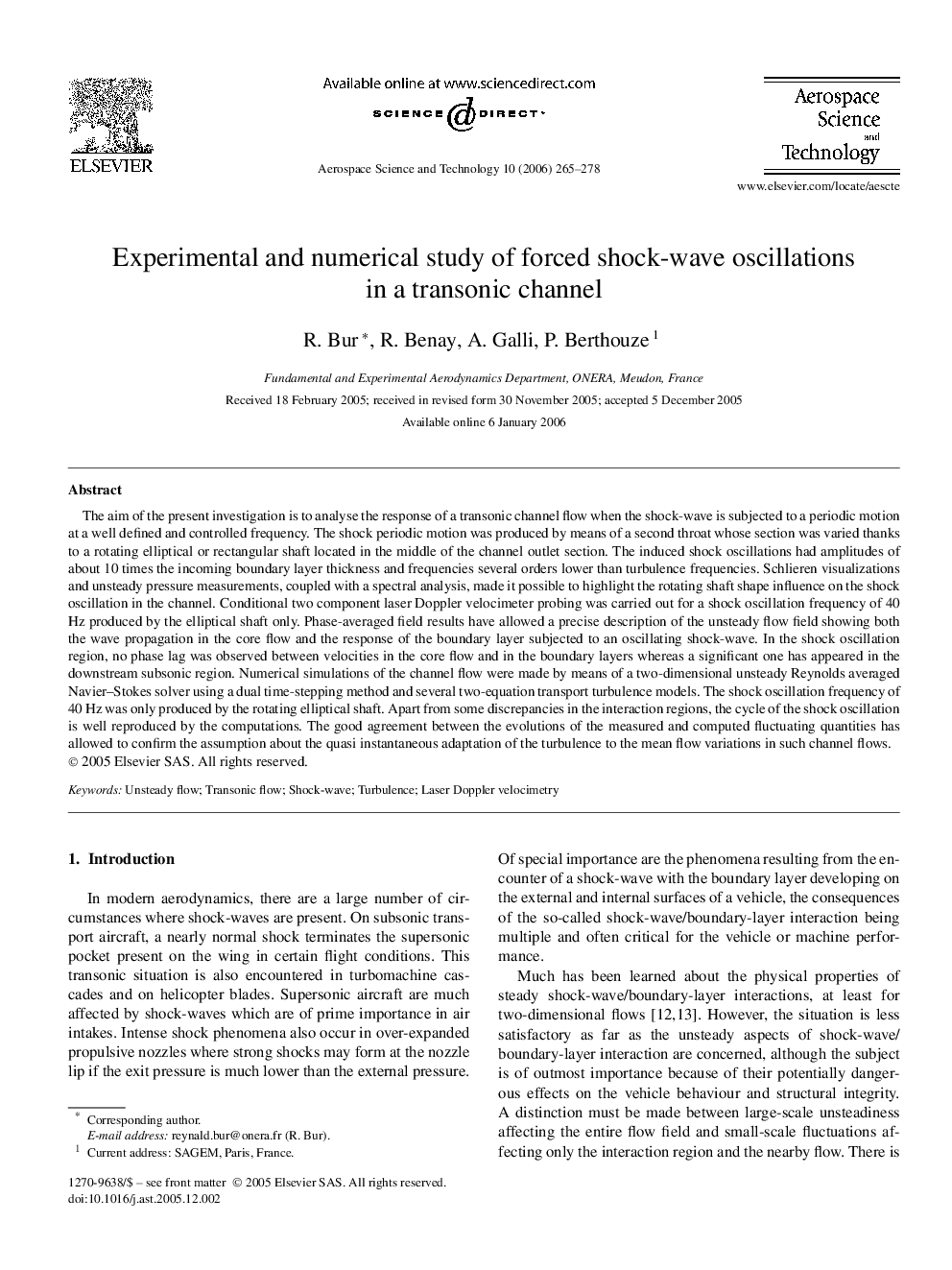| کد مقاله | کد نشریه | سال انتشار | مقاله انگلیسی | نسخه تمام متن |
|---|---|---|---|---|
| 1719032 | 1013887 | 2006 | 14 صفحه PDF | دانلود رایگان |

The aim of the present investigation is to analyse the response of a transonic channel flow when the shock-wave is subjected to a periodic motion at a well defined and controlled frequency. The shock periodic motion was produced by means of a second throat whose section was varied thanks to a rotating elliptical or rectangular shaft located in the middle of the channel outlet section. The induced shock oscillations had amplitudes of about 10 times the incoming boundary layer thickness and frequencies several orders lower than turbulence frequencies. Schlieren visualizations and unsteady pressure measurements, coupled with a spectral analysis, made it possible to highlight the rotating shaft shape influence on the shock oscillation in the channel. Conditional two component laser Doppler velocimeter probing was carried out for a shock oscillation frequency of 40 Hz produced by the elliptical shaft only. Phase-averaged field results have allowed a precise description of the unsteady flow field showing both the wave propagation in the core flow and the response of the boundary layer subjected to an oscillating shock-wave. In the shock oscillation region, no phase lag was observed between velocities in the core flow and in the boundary layers whereas a significant one has appeared in the downstream subsonic region. Numerical simulations of the channel flow were made by means of a two-dimensional unsteady Reynolds averaged Navier–Stokes solver using a dual time-stepping method and several two-equation transport turbulence models. The shock oscillation frequency of 40 Hz was only produced by the rotating elliptical shaft. Apart from some discrepancies in the interaction regions, the cycle of the shock oscillation is well reproduced by the computations. The good agreement between the evolutions of the measured and computed fluctuating quantities has allowed to confirm the assumption about the quasi instantaneous adaptation of the turbulence to the mean flow variations in such channel flows.
Journal: Aerospace Science and Technology - Volume 10, Issue 4, May 2006, Pages 265-278